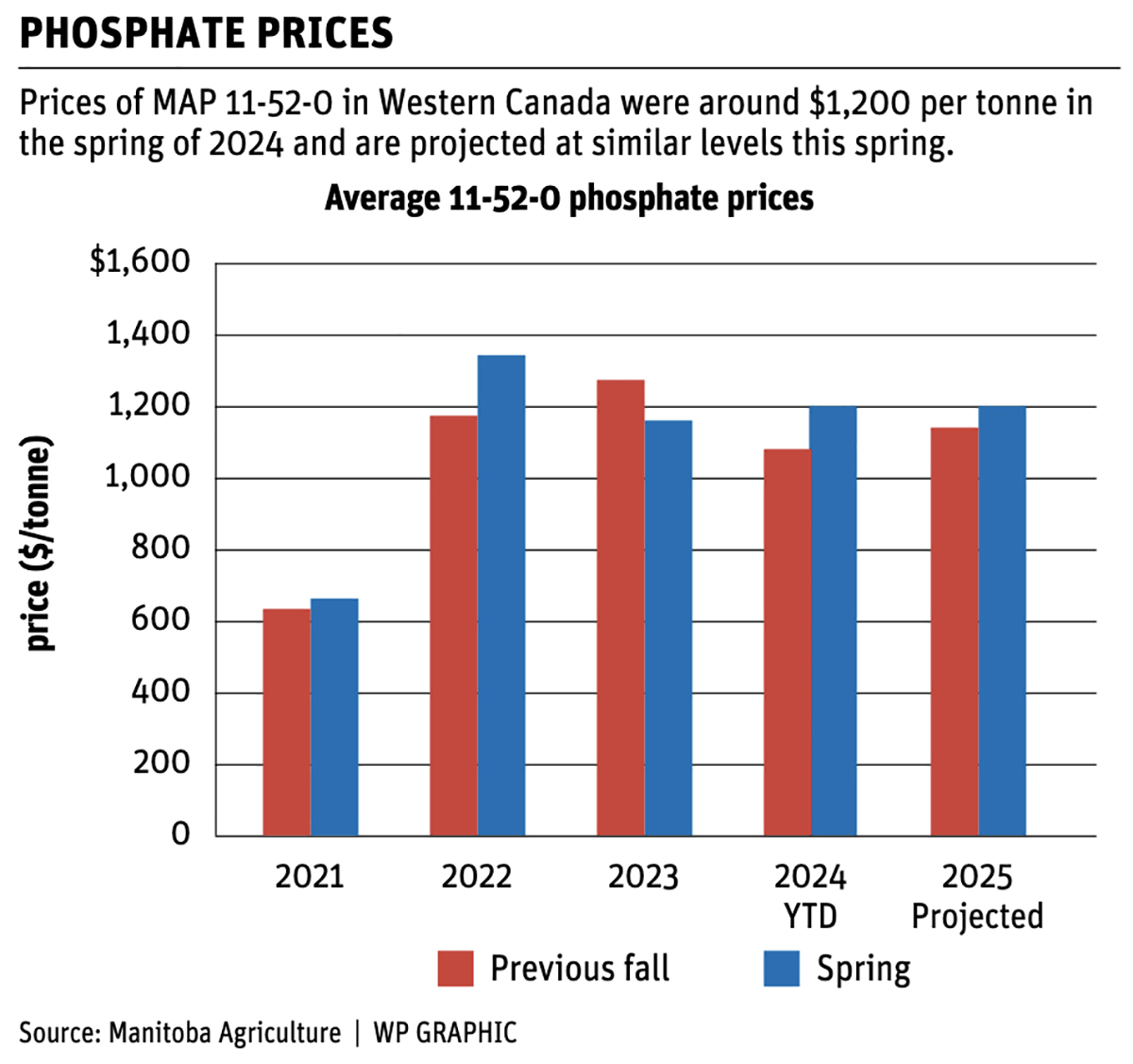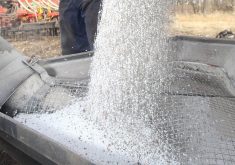ST. JEAN, Man — When compared to grain prices, phosphate fertilizer is expensive right now in North America.
That dynamic isn’t going to change anytime soon because inventories are down in the United States and imports of phosphate are almost non-existent, says a Nutrien rep.
“Phosphate does have a lot of challenges in 2025,” said Michel Poiron, regional sales manager for Nutrien Wholesale.
Read Also

Canola used in only quarter of Canadian biofuel
Less than one-quarter of the biodiesel and renewable diesel used in Canada in 2024 was made from canola oil feedstock
“I don’t believe they will be rectified in 2025. I believe phosphate is in a cycle that it will be (elevated) for awhile.”
Poiron spoke about the market outlook for phosphate and other fertilizers at St. Jean Farm Days, a trade show in Manitoba’s Red River Valley held Jan. 8-9.
In December, farm management experts with Manitoba Agriculture made a similar prediction regarding phosphate.
Prices of MAP 11-52-0 in Western Canada were around $1,200 per tonne in the spring of 2024 and are projected at similar levels this spring.
“Let’s look at phosphate…. Considering how much these crop prices have come down, phosphate is super expensive (right now),” said Darren Bond of Manitoba Agriculture.
During his presentation in St. Jean, Poiron said phosphate inventories are well-below average in North America.
Three factors have pushed down the supply:
- Chinese exports of MAP/DAP (mono-ammonium phosphate and diammonium phosphate) have declined.
- U.S. tariffs on Moroccan phosphate.
- Hurricanes in Florida that shut down phosphate production.
Poiron shared a chart that showed Chinese exports of MAP/DAP were 9.2 million tonnes annually from 2017-21. For the last three years, the average has been around 6.5 million tonnes, thanks to export restrictions in China.
Morocco has the largest reserves of phosphate rock in the world, but the United States has taken action to keep Morocco out of its market. Last fall, the U.S. imposed 16.8 percent tariffs on phosphate fertilizers from Morocco.
That’s up dramatically from the previous tariff rate from November 2023 of 2.1 percent, says Interfax.com.
U.S. tariffs on Moroccan phosphate have been in place at varying levels since 2021, following a complaint by Mosaic, the largest phosphate producer in the U.S.
“The company claimed that ‘large volumes of unfairly subsidized imports from Russia and Morocco’ were hurting its business,” Interfax said.
The Moroccans are frustrated with the continued tariffs and have essentially stopped exports to the U.S., Poiron said.
“There has been a refusal to bring products into the States because of that (tariff) decision … which isn’t really helping our situation,” he said.
“We are now relying generally on North America, on plants in Florida and North Carolina.”
However, hurricanes last fall shut down phosphate fertilizer production at some plants in the southeastern U.S. About a month of production was lost, which is contributing to the shortfall of phosphate in the U.S. and Canada.

“We know there is a shortage, we know there are production issues (in Florida), we know there is no imports coming in because of tariffs,” Poiron said, adding that Canada gets most of its phosphate from Florida.
It takes 20 to 24 days by rail to transport it to Canada.
Since spring is about 75 days away, there is little time to replenish phosphate inventories in Canada. So, farmers will need to think carefully about their phosphate purchases.
“I do have concerns in regards to supply,” Poiron said.
“Until we can get (more) production (in North America) or get political decisions that are in our favour, we might need to make some adjustments.”
Like phosphate, China has reduced its exports of urea.
When the Chinese government is concerned about domestic supplies of fertilizer and rising prices for farmers, it doesn’t issue export permits.
“This has created an environment where the world feels short on urea,” Poiron said.
He used a chart to show how U.S. stocks of urea and ammonia declined in 2024. There isn’t much time before spring to replenish urea supplies in North America.
Since demand for urea is strong, the tight supply will likely push up prices.
“Inventories in North America are near record lows,” Poiron said. “That is going to create more pressure on the urea market, in the short term.”
Contact robert.arnason@producer.com


















